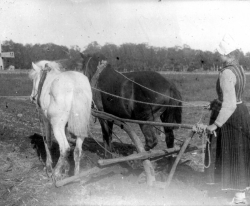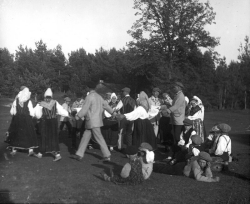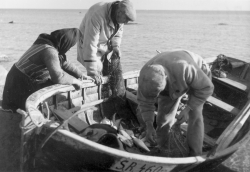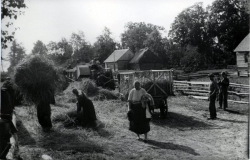Life and work on Ruhnu 



In 1688 there were 42 families on the island that had 22 sokhas (adramaa) of land. In september 1710 the number of inhabitants was 293. During the next three months the outbrake of plague reduced the islands population to 80 inhabitants. Population was at its highest in 1842 – the island had 389 inhabitants (207 men and 182 women). There were 27 farms on the island and the pastorate. There were not too many children in families, usually 2–3 kids. Language of Ruhnu inhabitants was an old dialect of Swedish; most men also spoke Estonian, Latvian, Finnish and Russian, languages that they learned in the neighbouring ports.
Ruhnu residents lived of farming and cattle breeding, fishing and seal-hunting. Women wre primarily in charge of farming while men went fishing and seal-hunting. Men helped in the field only during the haymaking. Formerly these activities provided Ruhnu residents with everything necessary for living and allowed a completely natural economy. In winter women were busy with spinning, weaving, lacemaking and sewing. They were especially good at embroidering; their best garments were richly decorated with embroidery. Men made and repaired boats, fishing nets and boots, made ropes, acted as smiths and carpenters. Household tools were mostly self-made.
Further reading
- C. Russwurm. Eibofolke oder die Schweden an den Küsten Ehstlands und auf Runö I–II. Reval, 1855
- K. Põder. How to Catch a Seal? The Study of Rational Social Norms of 19th Century Island Communities in Western Coast of Estonia. – CEU Political Science Journal, 2006, 1(2), 2–15
Related articles
Created in 2013









